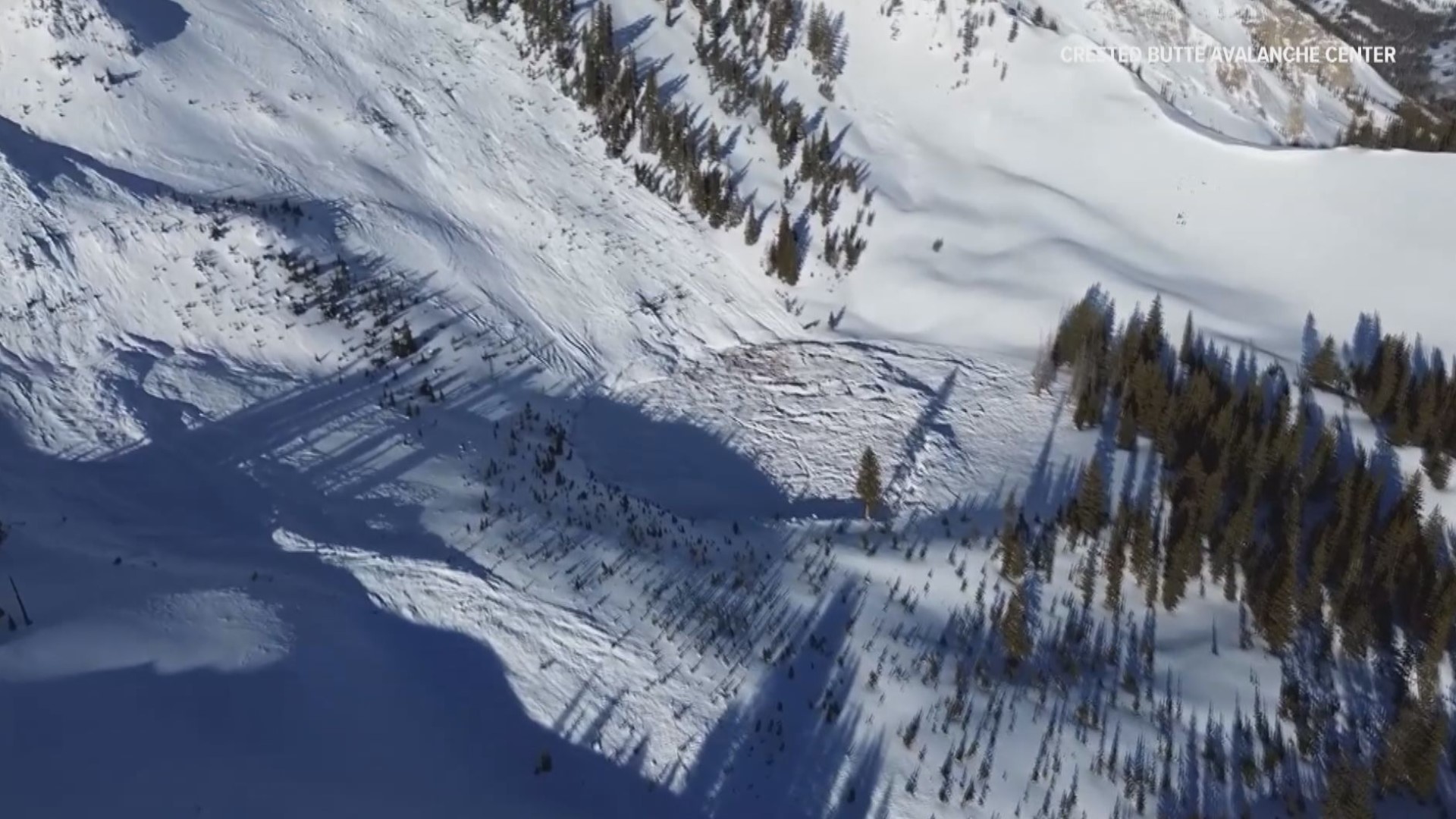DENVER — The Colorado Avalanche Information Center (CAIC) is warning about a specific type of large avalanche plaguing the state: persistent slab avalanches.
This kind of avalanches are caused when a thin layer of weak snow can’t support the weight of a bigger snowpack on top of it, and the top layer slips.
“Persistent slab avalanches can break much higher in the terrain and they can propagate wide over terrain features like subtle sub-ridges,” said CAIC Director Ethan Greene. "They often break above you, all around you, and in unexpected directions so they are more dangerous and trickier than other kinds of avalanches."
Greene said persistent slab avalanches are happening all over the Colorado mountains.
He said there is a thin layer of sugary, loose snow called a persistent weak layer at the very bottom of the snowpack, and it's been there since early December. All the snow that has fallen in Colorado since about the middle of January — which is a significant amount totaling more than six feet in most spots — is now sitting on top of that weak layer and is barely holding on.
“Now we’re starting to get avalanches on those same layers or other layers that formed later in the year, that are large enough to destroy buildings and cars,” Greene said.
Persistent slab avalanches are common in Colorado because the very cold temperatures and dry air help create and maintain those weak layers. They can persist for days, weeks and even months like they have this winter.
In comparison, places along the West Coast, like the central Sierra mountain ranges, get wetter snow and relatively warmer temperatures. Because of this, the weak layers of snow normally don't last as long there. Avalanche danger is already starting to stabilize in California after a 10-foot snowstorm last week.
Greene said that very heavy snow can sometimes bury weak layers enough that it's less likely to trigger a slab avalanche. Wet snow can also cause water to seep down into the weak layer and change its chemistry, especially in warmer months like March.
The snow in Colorado tends to stabilize and become safer when the warmer temperatures of spring arrive. That could be part of the reason avalanche fatalities are most prevalent during the months of January and February and tail off starting in March.


Many backcountry users target March as a time to plan trips in safer conditions, but Greene said he expects avalanche conditions to remain hazardous.
"It's better to plan your backcountry trips based on the current snowpack conditions and not the calendar," he said. “We will get into that time period eventually. Whether it’s March or April or May is hard to know right now, but we’re not there yet.”
Another significant snowstorm is moving toward Colorado and is forecast to bring another 6-18 inches of snow, this time favoring the central and southern mountains. Greene said avalanche danger in some areas will likely get elevated from considerable to high on Friday and Saturday, depending on how much of a factor the wind plays.
SUGGESTED VIDEOS: Colorado Climate

